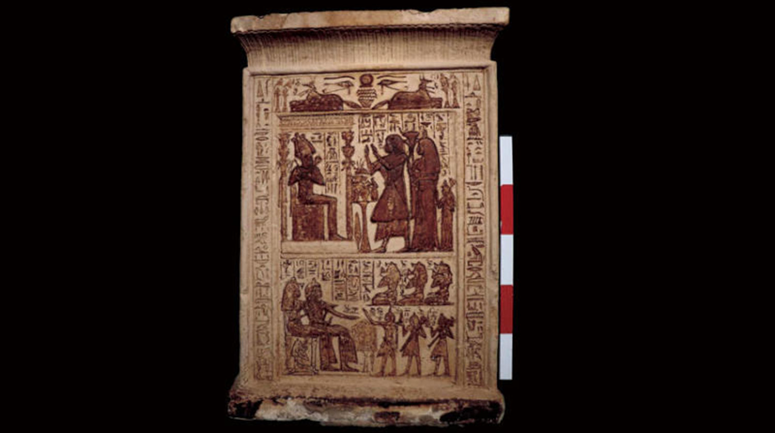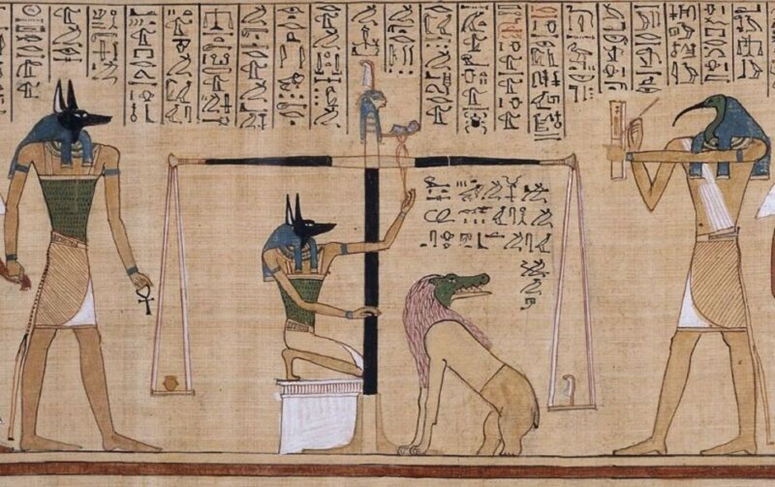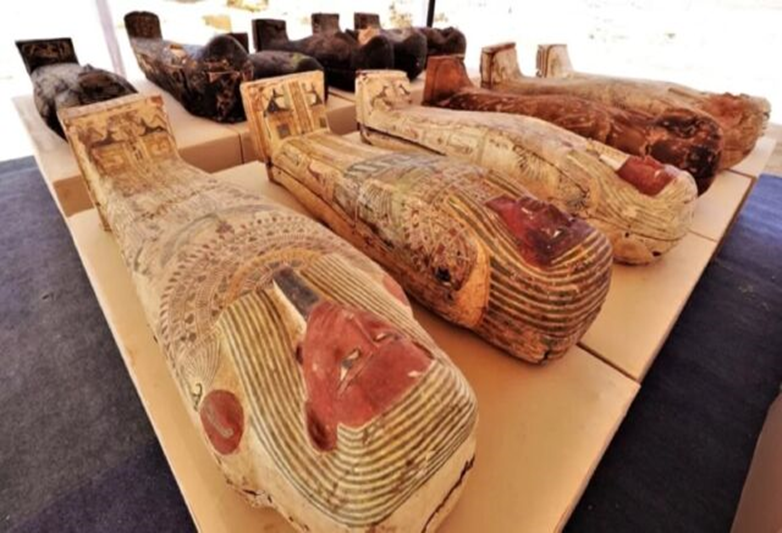Rare coffins...and papyrus from the “Book of the Dead” in a major Egyptian discovery

Part of the archaeological discoveries in the Saqqara area in Giza (Egyptian Ministry of Antiquities)
Yesterday, the Ministry of Tourism and Antiquities in Egypt announced the discovery of a funerary temple, rare mummies, coffins and funerary furniture, in the Saqqara archaeological area next to the pyramid of King Teti (the first king of the Sixth Dynasty of the Old Kingdom), as well as coffins, mummies and funerary furniture dating back to different eras of the Old and New Kingdoms. During the excavation work carried out by the joint Egyptian mission between the Supreme Council of Antiquities and the Zahi Hawass Center for Egyptology at the Library of Alexandria.
Dr. Zahi Hawass, former Minister of Antiquities and head of the mission, told Asharq Al-Awsat that “the discovery gives a clear idea about worship in the era of King Teti, and that he was worshiped at the beginning of the 18th and 19th Dynasties,” noting that “this made the area sacred and important men were buried there.” The state and the princes, and we found the names of kings in the region, such as Thutmose I and Tutankhamun.
The discovery included the funerary temple of Queen Narat, wife of King Titi, part of which was uncovered in the years preceding the mission, in addition to the layout of the temple, and three warehouses built of mud brick in the southeastern side, which were used to store offerings and tools.

Hawass said, “When part of the temple was discovered in 2010, it was believed that it belonged to the king’s mother, called Sechet, but today’s revelations show that King Titi had a wife who was not written in the history books, and she was Naarat, and she was Lebanese, and this is the time the marriage of a king to his daughter was recorded.” In the Sixth Dynasty.
The mission found 52 burial wells, ranging in depth between 10 and 12 metres, inside which there were more than 50 wooden coffins from the New Kingdom era. This is the first time that coffins dating back three thousand years have been found in this area, according to Hawass, who explained. “The coffins have a human form and on their surfaces are many scenes of the gods and various parts of the texts of the Book of the Dead.”
The discovery included a group of archaeological artifacts and statues in the form of deities such as the gods “Osiris, Ptah, and Sokar.”

Hawass said, in a press statement, that “the mission found a papyrus measuring four meters long and one meter wide, representing the seventeenth chapter of the Book of the Dead, with the name of its owner recorded on it, which is (Bu - Kha - Af). The same name was found recorded on four statues.” Ushabti, and a wooden coffin bearing the human form of the person himself was found, in addition to many Ushabti statues made of wood and faience stone from the New Kingdom era,” he described the discovery of the papyrus as “unique.”
For his part, Dr. Hussein Abdel Basir, Director of the Antiquities Museum at the Library of Alexandria, told Asharq Al-Awsat, “The discovery shows the importance of the area and its use in various eras as a sacred area and includes a distinguished group of antiquities that tell the details of daily and funerary life in that period, which is an addition.” For history,” noting that “the region is promising and is expected to reveal more secrets.”
Hawass said, “These discoveries will rewrite the history of the region, especially during the 18th and 19th Dynasties of the New Kingdom, which is the period in which King Teti was worshiped and burials were carried out at that time around his pyramid.”

Among the relics that were discovered were a group of wooden masks, the shrine of the god Anubis, the god of the cemetery, and a number of games that the deceased played with in the other world, such as the cent game, which is similar to chess now, and the twenty game with the name of the person who was playing on it, in addition to To a number of artifacts in the form of birds, such as a goose, a bronze duck, and engraved paintings.
Hawass said that among the paintings is “a limestone panel in a good state of preservation, on which is depicted a scene of a deceased person named (Khu-Ptah) and his wife called (Mut-Um-Ya), in front of them are six children, one of whom is a girl named (Nefertari), which is the name The beloved wife of King Ramses II, and he bore the name of one of the sons (Kha-um-wast), which is the name of one of the sons of King Ramesses II. He is considered the wise man of the era and is called the first Egyptologist, as he restored the effects of his ancestors.
Hawass explained, “This discovery confirms that the Saqqara antiquities area was not only used for burials during the Late Period, but also in the New Kingdom. It also proved the existence of many workshops that produced these coffins that were purchased by the people, as well as workshops specializing in mummification.”
A study of a mummy of a woman showed that its owner was suffering from a disease known as “Mediterranean fever” or “swine fever.”
Source : websites

